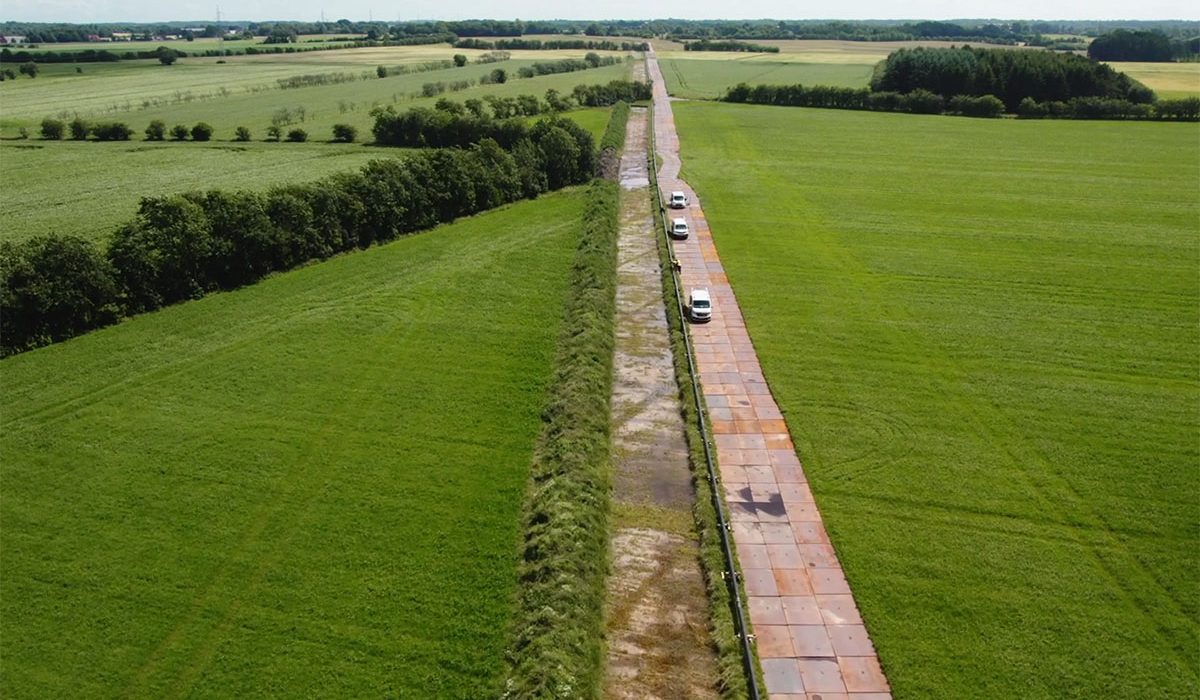Green hydrogen may become the new black in Mariagerfjord
As a butterhole in the green transition, Mariagerfjord is close to underground caverns, which are suitable for storing hydrogen, and close to the "highway" of pipes, which is planned to lead green hydrogen down through Jutland to Germany. Therefore, a major investigation has begun, which will map the future production and consumption of green hydrogen in the area - including the economic benefits for producers and potential consumers of establishing a piped hydrogen infrastructure. Hydrogen Valley and the national gas distribution company Evida are among the participants in the project.
Hydrogen will be an important component in the green transition because it can be produced on the basis of wind turbine power and replace fossil fuels in heavy transport and in industrial processes. Not least in Germany, there will be a great need for green hydrogen for, among other things, the steel industry, the chemical industry and refineries, and with the installation of the offshore wind-based energy island in the North Sea, Denmark is expected to be able to become a major supplier of the green gas to our neighboring countries.
But hydrogen will not only be produced at sea. Around 50 land-based Power-to-X plants, where solar and wind energy are converted into hydrogen or further refined into e-fuels, are already on the drawing board, under construction or in operation in Denmark – of which 8 are located in Mariagerfjord and the surrounding area. And it's not just neighboring countries that can use up hydrogen. A number of Danish companies are also expected to become customers for green hydrogen – including companies that want to further refine green hydrogen into methanol, ammonia and kerosene, which can replace fossil fuels in heavy traffic, or for example companies that want to replace natural gas with hydrogen to achieve high temperatures in industrial processes.
Establishing a pipe system is "the missing link"
But how is the hydrogen to be transported around? Today, the vast majority of hydrogen is transported in pressure tanks on trucks. However, hydrogen takes up a lot of space and must be compressed when transported in pressure tanks, and this requires a lot of energy. In a future society with an extensive production of hydrogen, it is not economically, energy- or traffic-wise appropriate to transport the gas around via country roads - here it must be carried around through buried pipes, as we do today with natural gas and biogas. Natural gas for households will be phased out as part of the green transition, and some of the pipes will be able to be reused for the transport of hydrogen. But there will also be a need for new pipelines - and here it is important to document where the need is.
On the other hand, there are significant advantages to establishing a piped hydrogen infrastructure – not least financially, when large quantities of hydrogen have to be transported around between producers and consumers. The producers also gain the advantage of being able to produce hydrogen more flexibly and when electricity prices are favorable, and the customers get a stable supply of hydrogen with piped hydrogen infrastructure and storage capacity in caverns.
Based on this, Evida together with Hydrogen Valley, Gas Storage Denmark and Eurowind has carried out an analysis and mapping of a possible future hydrogen landscape in an approx. 40 kilometer belt across North Jutland, which includes Mariagerfjord. The project is part of the overall North Jutland project CO2 Vision.
The big green button
When Mariagerfjord is interesting in a future hydrogen landscape, it is linked to several factors. Firstly, the area is next to the underground cavities in Lille Torup - so-called caverns - which have a very dense structure and are suitable for storing hydrogen in. For the same reason, the planned "motorway" of hydrogen pipes is led down through Jutland close past the caverns and i.e. through Mariagerfjord. And by the way, Hobro is a pioneer in Power-to-X projects with Hydrogen Valley, the HyBalance plant, Ballard Power Systems and Eurowind as important players.
Green hydrogen may become a crucial resource in Mariagerfjord in the future. We have companies that can and will produce hydrogen from the sun and wind, and we have companies that can purchase the green hydrogen if it can be delivered stably and continuously through a pipe system. But there is a lot of infrastructure that needs to be built before we can press the big green button. That infrastructure also includes transport of CO2. If we can capture the biogenic carbon from companies before discharge and take it to other companies that can use CO2 as a component to produce, for example, green methanol, then it is socially better than depositing the carbon. In short, the biogenic CO2 from, for example, biogas plants should be used for the production of green fuels, while fossil CO2 should be deposited underground. For both purposes, we must use piping, says Morten Brandtoft, business developer at Hydrogen Valley, who as a project organization has worked with business development and concept design within Power-to-X for 15 years.
Hydrogen Valley is interested in hearing from companies who are curious to find out whether they can eventually use green hydrogen as a raw material or high-temperature heating in their industrial production. The same applies to companies that want to investigate the possibilities of reducing their climate footprint by utilizing their biogenic CO2 for the production of green fuels or storing fossil CO2 underground.
The "Hydrogen in pipes" project is part of CO2Vision, which is financed by REACT-EU funds.
The article was prepared by Hydrogen Valley.













